Some of the best handheld radio for hunting units are now flooding the market. Despite the many modes of communication available today, the handheld radio remains relevant. In its simplicity and efficiency, this device finds itself very much still in use by the military, law enforcement, or in civilian recreational activities.
The handheld unit is interchangeably called the two-way radio and endearingly nicknamed the walkie-talkie. It has so many uses. Friends out for a bike or hike use these gadgets to stay in touch. Kids playing make-believe adventures use them to add realism and excitement. Cars on convoy can communicate on the fly, sharing plans as they go along. Some people even use them in their homes to avoid yelling. They are also indispensable to construction sites.
Its uses are very practical and endless. Camping trips are especially well-served by the walkie talkie. Another outdoor activity that uses the handheld radio is hunting. Staying in touch in the field for huntsmen is crucial for hunting strategy. Walkie-talkies have indeed carved a special niche in electronic communication, and it remains unchallenged in its two-way modality.
[table id=9 /]
What is a Handheld Radio and What Are Its Origins?
Many among younger generations that came into this high-tech, smartphone, internet-driven world may not know what a handheld radio is. For their benefit, here is a brief background.
A handheld radio nicknamed a “walkie-talkie” is technically a handheld transceiver (HT). A transceiver is a device that can transmit or send signals, as well as receive them. A typical walkie-talkie looks like a telephone handset. It will have a speaker built into the lower end and a microphone in the upper portion. In some models, the speaker is also used as the microphone.
A small-rubberized antenna is mounted on the top of the unit to help the power signal. To use them, they are held up to the mouth, and you press a button to talk and release the same button to receive a response. They are widely in use to this day wherever quick reliable communication is needed.
They are used in close to moderate distances, and for farther reach, a repeater is integrated into the system. On the recreational side of its functionality, smaller toy variants of this device are also very popular among young children
The History Of The Hand Held Radio
Although there is no consensus as to who is directly responsible for its invention, Canadian inventor Donald Hings is credited with the creation of the first portable radio signaling system in 1937. Hings’ versions of this gadget was a portable field radio for the bush pilots of Consolidated Mining and Smelting (now Cominco). The pilots had to fly their planes between remote sites in the far north of Canada and used these portable units for essential communication. Hings called the system a “packset.”
The nickname “walkie-talkie” came about later as journalists coined the term reporting on this new invention during World War2. The first walkie-talkies versions did not get much attention until the outbreak of war in 1939. On the battlefield, they suddenly became a vital piece of military technology.
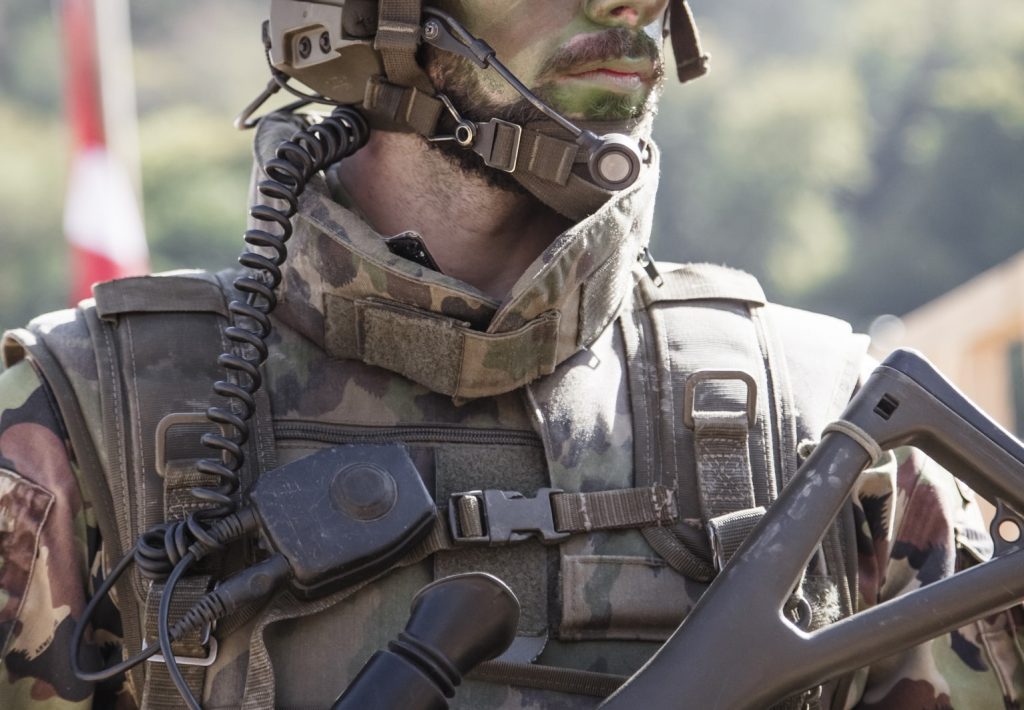
With the war driving further research and development it, was not long before countless units were built and shipped overseas. Versions for both European and Pacific theatres came about, along with vehicle and tank-mounted variants. The walkie talkie was from then on here to stay.
The Handheld Radio and Its Role in Securing Safety
One of the most important aspects of survival is communication and coordination. This allows you to call for help, call attention to a danger, and even avoid the danger altogether. However, communicating in the wilderness is not that easy.
Enter the handheld radio, anyone that goes off into an outdoor activity should always have a handheld radio. It allows you to keep in touch over distances when you have lost sight of each other, and other hiking or camping mates can venture off, but still be within communication range.
Voices do not carry very far in the outdoors, and shouting is not effective. It can even be confusing since sound can reflect on surfaces, throwing you off. Two-way radios solve these issues and facilitate long-range communication. Do you see any kind of imminent danger headed to your buddies? Just communicate on the radio.
Walkie talkies are even more indispensable in an emergency. If you get hurt and are not with your group, yelling is not likely to bring help. A two-way radio can get assistance effortlessly informing your group of your location and condition.
All in all, the hand held radio is the glue that enables groups of people to survive and coordinate to tackle the dangers of the great outdoor. Although this is not part of the 5C’s of survival, a hand held radio will be a godsend when you’re lost and need to find your way back home.
Handheld Radios and Hunting
In a hunting scenario, these radios can allow fellow huntsmen to coordinate their approach or attack. Fellow huntsmen can communicate strategies, prey sightings, and other information as they go about in an area. Thanks to a walkie-talkie, hunters are also able to remain stealthy, making sure they are not overheard by potential prey.
The best handheld radio for hunting can use accessories in a similar way that the military or law enforcement use them. Special attachments like mics, earphones, and belt hooks allow the radio’s unobtrusive and quiet use.
Handheld Radio Superiority Over Cellphones In Hunting
Cell phones can be unreliable in the woods. If they are unable to get a cell site signal, chances are that those phones become useless. As you travel into more remote sites, the probability of a bad signal increases. Two-way radios are not going to encounter this kind of technical issue. They are the best mode of communication for hunting. Walkie talkies are easy to use, are very reliable, and much more durable than a typical cell phone.
When hunting in the wild, you should indeed stay alert and focused. But it also helps a lot to stay amused. Boredom can easily get to you, especially if you are staked out alone somewhere with no one to talk to. A two-way radio can keep help keep you entertained by talking with your fellow hunters.
Choosing the Best Handheld Radio For Hunting
There are radios today that are designed to meet the needs of outdoorsmen like hunters. These units have special features that make the hunting activity safer and more productive. There are also the standard features that have been part of walkie-talkies since they were invented. Here is how to size-up the different models of handheld radios in the market.
Two-way radios are extremely popular with hunters, in fact, manufacturers are now producing models specifically for the hunting environment. When shopping for one it is not surprising to come across camouflage finish units bundled with headsets, mic’s, and car lighter adapters. In fact, there are so many radios built for hunters, you might scratch your head in confusion once you survey the market.
Here are some essential qualities to look out for when selecting the best handheld radio for hunting suited for you.
Range
Power or range is one of the most important features to weigh when selecting the best handheld radio for hunting. The effective range of your handheld set will also depend on the terrain. Mountains, forests, boulders formations, and structures will limit a radio’s ability to throw a signal. A stronger unit can better overcome obstructions. For instance, if you hunt in thick brush or woods, power is a serious consideration.
Higher power radio units can travel a mile or more of range under rugged conditions and terrain. Furthermore, clear receptions, transmission, and sound will give you an advantage regardless of open fields, rocky surfaces, dense forests, or whatever the terrain may be. Once in the wild, the hunting area could be very open or filled with obstacles. Either way, make sure that the range of your two-way radio can cope.
Many manufacturers will claim a 35-mile range, but this is subject to real-world testing. The actual evidence of range is when you bring the radio out for a test, or if you can get feedback from actual users who have tried it in the field.
Durability
Rugged, hardwearing high-quality radios are important to consider. You will be subjecting it to the elements; rain, sun, heat, cold, moisture, you name it. There is a good chance to even drop it now and then. Chose a tough handheld radio that can take abuse, as it will surely get some. Look for radios with shockproof properties.
Water-Resistance
Speaking of durability, a particular quality you need to look for is water resistance. Being in the wild, it is inevitable that you will come across water such as rain, rivers, streams, falls, and lakes. Water-resistance is vital so you do not end up with a radio that quits on you if it gets wet. Most hunting handsets are resistant to rain, but some can take total water immersion. Conversely, those that live in dry areas may want to check unit tolerances for dust resistance.
Quiet Operation
Stealth is key for a successful hunting adventure. If your prey knows you are there, game over. A two-way radio equipped with a silent mode squelches all the usual transmission and reception sounds. When hunting, you want to disable all the tone and beep alerts, so you are invisible to the wildlife.
Headset for Handheld Radio for Hunting
Part of the quiet operation is a headset. When you are hunting, you will not want the messages you receive blaring from your unit’s speaker, scaring your prey away. Headsets also free your hands from holding on to the unit. Headset support is a vital feature, with almost all models having them, but check anyway.
Some headsets use a hardwire connection usually in conjunction with a mic. Some are wireless-connected using Bluetooth technology. Make sure you find this feature in the units you select.
Battery Life
Your battery life determines how long it will work in a hunt. A good two-way radio must have a powerful battery that will provide many hours of use. Select a model rated for long stretches of operation. Also look out for units that have the dual capacity to run on standard batteries just in case, or models that can recharge on your vehicle’s lighter port.
Some handhelds have mini-USB ports, while others can only be charged up using a desktop charging accessory.
Direct and Group Calling Modes
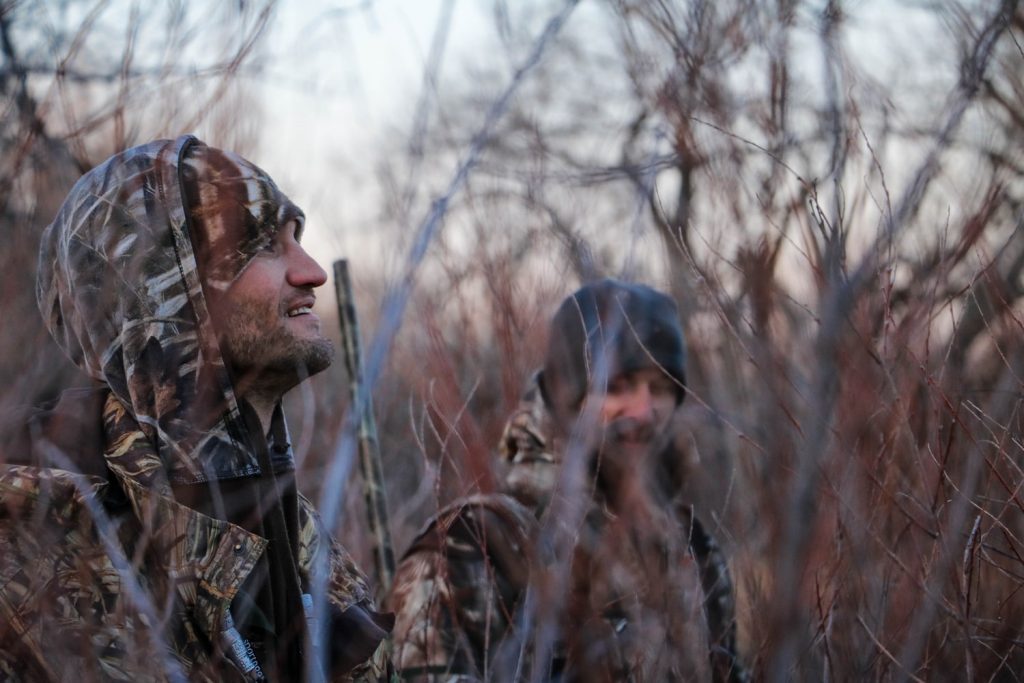
A further feature to consider is the calling mode options on your radio. A situation may have different calling requirements when hunting in the wild, depending on your goals and hunting group. For instance, if you hunt with just one partner, then all you need is direct calling mode to reach him. If there is a hunting group, then a group calling mode feature can allow you to communicate with everyone at once simultaneously. Calling modes is vital to achieving hunting targets.
Appearance
The finish of your radio could also help make you invisible. A black, yellow, or red unit could make your best efforts to remain inconspicuous a failure. There are now camouflage models to choose from so you can blend into the wildlife.
NOAA Alerts
When outdoors, it highly probable you will come across inclement weather. That is in fact part of the fun. Weather is so unpredictable and if extreme conditions are imminent, alerts can bring you to safety. A handheld radio unit that accepts National Oceanic and Atmospheric Administration or NOAA alerts will be a great advantage. You will have advisories of coming weather conditions in advance, providing valuable time to do some preventive measures. That is extremely important for your safety, even when not hunting.
Some walkie-talkie models feature automatic scans, find the strongest signal, and locks it onto the National Weather Service to receive breaking weather information. Weather safety is always a concern and it is even more critical when you are vulnerable while in the wild. Thunderstorms and even twister alerts could prove life-saving. Other hazard alerts like emergency events of mudslide, fire, and landslides will also be accessible.
If your radio is capable of receiving these alerts and warnings, you can protect yourself and even help others by sharing the information.
Price
Quality will come at a price since we are talking about gadgetry. Entry-level hunting two-way radios kits start at about $40. Expect low output and restricted range capacities. They will have simple interfaces and some do not have LCD screens. However, if your needs are simple, this could do the job. Mid-price two-way sets will sit in the $75 price range and will be more powerful. These units will also offer some water resistance, style options, USB support, and accessories to select from.
The priciest hunting-designed two-way radio sets will set you back $100 and up. These sets are more powerful and tougher than their mid-range and entry-level counterparts. They will have the bells and whistles like group call features, excellent battery life, and many color options. There will also be many accessories to choose from.
And now, for our top pick handheld radio for hunting!
[wp-review id=”318″]
[su_service title=”The Runners Up” icon=”icon: star” icon_color=”#2D3092″ size=”32″ class=””][/su_service]
[su_service title=”Motorola T265″ icon=”icon: star” icon_color=”#2D3092″ size=”32″ class=””][/su_service]
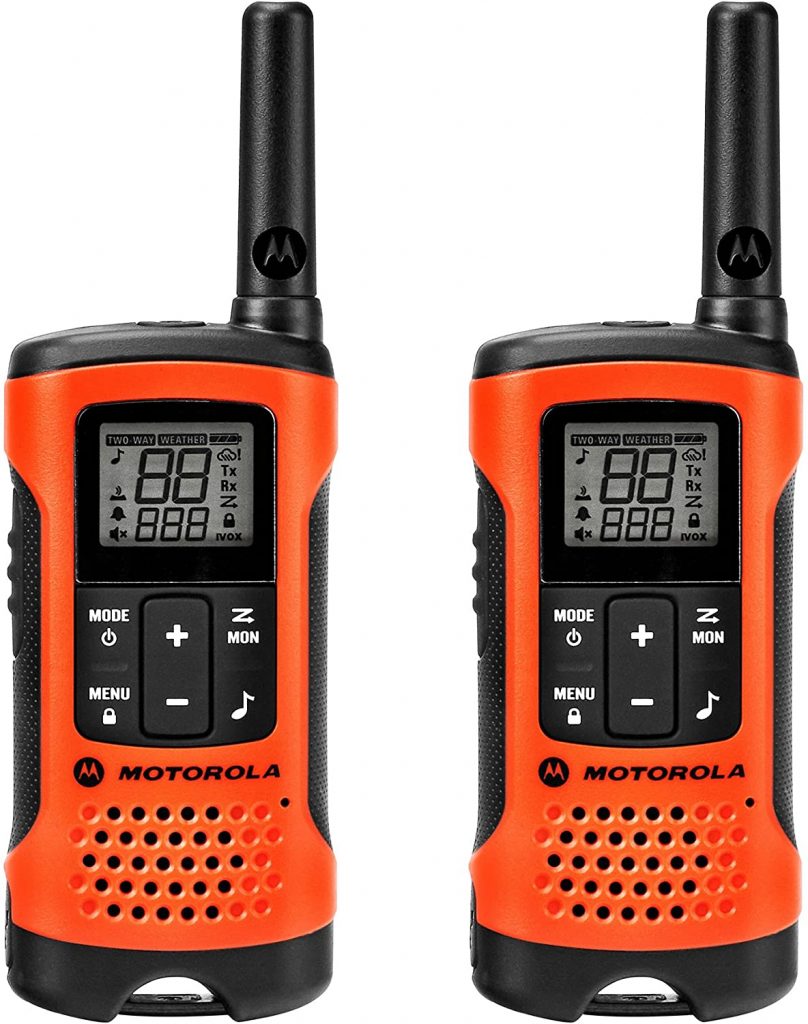
The Motorola T265 is one of the most successful Motorola Talkabout handheld radios on the market today. This rugged, feature-packed handheld radio will easily help you communicate with your fellow hunters during a hunting trip.
Sadly, this handheld radio is not waterproof, you’ll need to wrap it in plastic if it rains. However, It has a decently waterproofed camouflaged carrying case so you can store it safely during your hunting trips.
The T265 has 22 channels and up to 121 privacy codes for multiple safe communication options. Additional features are 11 Weather Channels (7 NOAA), twenty Call Tones, Quiet Talk filter, and the ever-important hands-free iVox functionality. This feature frees your hands making it great for camping, hiking, fishing, and other outdoor activities, especially hunting.
Power options for the T265 Handheld radio include a rechargeable NiMH battery pack or regular Alkaline batteries, giving you versatility outdoors. The NiMH battery will net you around 12 hours of operating time while 3 alkaline batteries will get you around 29 hours.
A set of the T265 comes with two Motorola T265 radio, one Y-Cable charging adaptor with dual micro-USB connectors, 2 belt clips, 2 NiMH battery packs, and a user guide along with the camouflaged casing.
If you’re in the market for a great quality handheld hunting radio and doesn’t need the waterproofing feature that much, the Motorola T265 is a great choice.
However, some of our friends reported that there are small quality control issues with few models having poor reception, sound quality, and faulty parts. Make sure to check the product quickly after you buy so that you can return it and ask for a replacement if there is a problem
[su_service title=”Kenwood ProTalk TK-3402U16P” icon=”icon: star” icon_color=”#2D3092″ size=”32″ class=””][/su_service]

The Kenwood ProTalk TK-3402U16P is a professional level handheld walkie-talkie. This beast features military specifications. It is a powerful 16 channel, 5-watt business two-way radio using a lithium battery that gives up to 18 hours of operation or 14 hours minus the battery-saver feature. This powerhouse radio is both at home in urban or hunting situations.
It supports coverage for up to 370,000 square feet, 33 floors if in a building, and up to 7 miles outdoors if on a hunting trip. It is programmable to UHF frequencies, will work with a repeater, and supports over 200 Quiet Talk codes. The ProTalk TK-3402-U16P comes in a nice small package, but do not let its diminutive size and not so aggressive shape fool you. This is a powerful radio that conforms to military standards.
Its qualities of compact size and durability make the TK-3402U-16P a top choice for use in a wide number of applications, from the city to the jungle. The ProTalk is feature-packed with stuff like call alert, busy channel lockout, 4-color LEDs, voice annunciation, channel confirmation mode, built-in voice-inversion scrambler, adjustable microphone gain, and time-out timer. It is also capable of hands-free (VOX) operation when used with optional accessories, especially useful for hunting.
It comes standard with a removable antenna, accessory port cover, channel stopper, drop-in fast charger, 12/18 hour lithium rechargeable battery, spring action belt clip, and a two-year manufacturer warranty. This the only unit on this list that is a UHF radio. It transmits in frequencies beyond FRS and GMRS but can communicate in those frequencies as well. It may only have 16 channels, but there are 90 frequencies assignable to any of those channels. Cloning settings to another TK-3402U16P in the field is even possible for special situations that call for it.
[su_service title=”Cobra CXT1035R FLT” icon=”icon: star” icon_color=”#2D3092″ size=”32″ class=””][/su_service]

If you are hunting and anticipate lots of encounters with water, look no further. The Cobra CXT1035R FLT is a waterproof radio that can float if it falls in the water. It uses bright colors to help you see it in case you drop or misplace it. It employs rubber armor that protects it from water drops, and the design is also consequently dustproof. While the majority of hunting radios are water-resistant, the Cobra CXT1035R is not only buoyant but can take complete water immersion.
That means that when hunting, no need to worry about river crossings, or getting wet in the rain. This feature makes it likewise suitable for fishing and many other kinds of outdoor activities involving water. Another feature of this unique handheld is its repeat-say-again feature. In case you did not understand a previous transmission, simply play it back again for a repeat of the message. This feature replays the last 20 seconds of audio.
Other cool features added by Cobra are a built-in flashlight that comes in handy for dark situations. It also has a foolproof volume control design, preventing any accidental sound level changes. The NOAA weather alerts feature is great for avoiding storms, twisters, and troubling foul weather conditions. You also get to use the standard 22 FRS/GMRS channels. It comes in a camouflage design, excellent for hunting.
The Cobra CXT1035R comes with a small, two-device charger that takes up minimal space, another feature that is worth mentioning.
[su_service title=”Midland T290VP4″ icon=”icon: star” icon_color=”#2D3092″ size=”32″ class=””][/su_service]
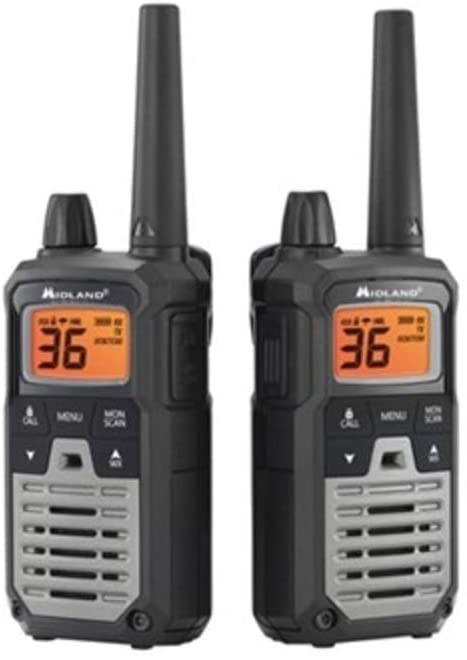
The great thing about the Midland T290VP4 is the privacy features. Rather than just a few privacy codes, you get 142. This means that you will always be able to remove unwanted communications on whatever channel your hunting group chooses to use. It is capable of sending group calls and direct calls, depending on your situation. The T290VP4 requires a GMRS license to operate.
It is black and silver finished, feature-loaded, convenient, and a discreet unit to maintain while hunting. This is clearly a radio with an aesthetic meant for hunting and other outdoor activities. The T295VP4 is an identical model finished in camouflage. Each handheld comes with 22 selectable GMRS channels, and 14 Midland preset channels. The system is capable of up to 40 miles of wireless communication in open areas. It likewise has a channel scan feature that searches for channels with activity. This ensures that you use an open channel for unhampered, private transmissions.
Additionally, there are 121 privacy codes, providing you up to 2662 channels to block other conversations. Likewise, the T290VP4 has 10 NOAA weather band channels with scan and alert functions keeping you abreast of the latest severe weather bulletins. You can select from five various call alerts or five animal tones, use vibrate alert mode, or go for the silent mode for stealth. For hunting use the eVOX mode for hands-free communication using the single-ear headsets.
Two style options are available, mossy oak camo for the T295VP4 and black/silver for the T290VP4. The high, medium and low power options permit you to vary the radio’s transmission power to prolong battery life. The handheld derives power from a rechargeable battery pack with the battery level display on the backlit LCD screen. It comes with a desktop charger, while an AC adapter allows you to charge both radios using a single wall outlet. USB charging is possible through the available ports.
Frequently Asked Questions
Q: What are the privacy codes in hand held radios?
Answer: Privacy codes block unwanted conversations on a channel, acting as a filter. Under normal circumstances, anyone tuned to the channel can hear all transmissions on it. This can be confusing, as different hunting groups could be trying to use the same channel. If members of a group agree to use the same code, unwanted conversations are not heard and are blocked out.
Q: How are Ham radios compared to two-way radios for hunting purposes?
Answer: For the most part, two-way radios are a superior choice. Ham radios may have more features, but they are pricey. Walkie-talkies are usually a lot more efficient and more compact/durable to boot.
Q: Can I use a handheld radio set not meant for hunting?
Answer: Of course. Any handheld or walkie-talkie set will work. Hunting specific radio sets just have more features developed for that environment. If you don’t think you need the extra features, by all means buy the regular handheld radio sets. Usually, they’re cheaper and more readily available compared to feature rich full on hunting radios.
Q: What are FRS and GMRS channels?
Answer: GMRS or General Mobile Radio Service channels are for long-range radio gear, usually of professional grade. FRS or Family Radio Service is in use by low powered devices and are recreational in nature. Anyone can use FRS channels, while you will need to secure an FCC license to use GMRS.
Q. Do I Need A Lot of Money For A Good Handheld Set For Hunting?
Answer: Well, as they say, you get what you pay for. An entry-level walkie-talkie set will cost around $40, and that should get you going on novice/beginner hunting trips. However, if you need extra features such as waterproofing, extra padding/armoring, or other specific features, it’s better to buy a mid-high end hunting radio.
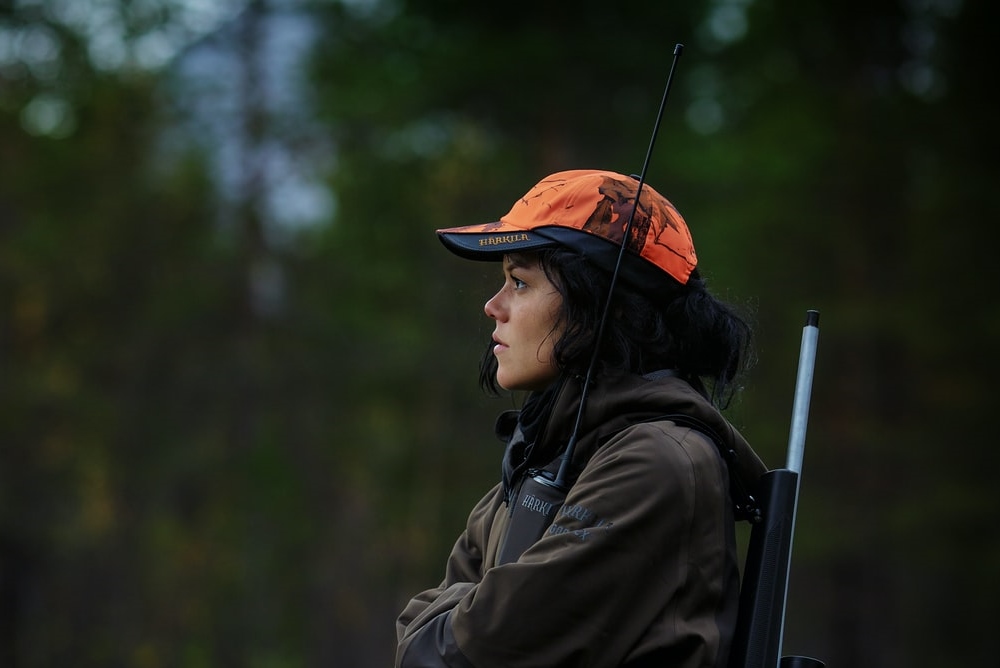
In Conclusion
After going through the different handheld radios for hunting sets, we believe these five models will satisfy you for some time. They come with features that you will find very helpful in a hunting situation. Ample power, lots of channel options, ease of operation, and durability. While these are not the priciest money can buy, they are by no entry-level category units.
These handheld radios for hunting sets satisfy hunting enthusiasts that demand top-notch performance, as they enjoy the spoils of outdoor wildlife.


